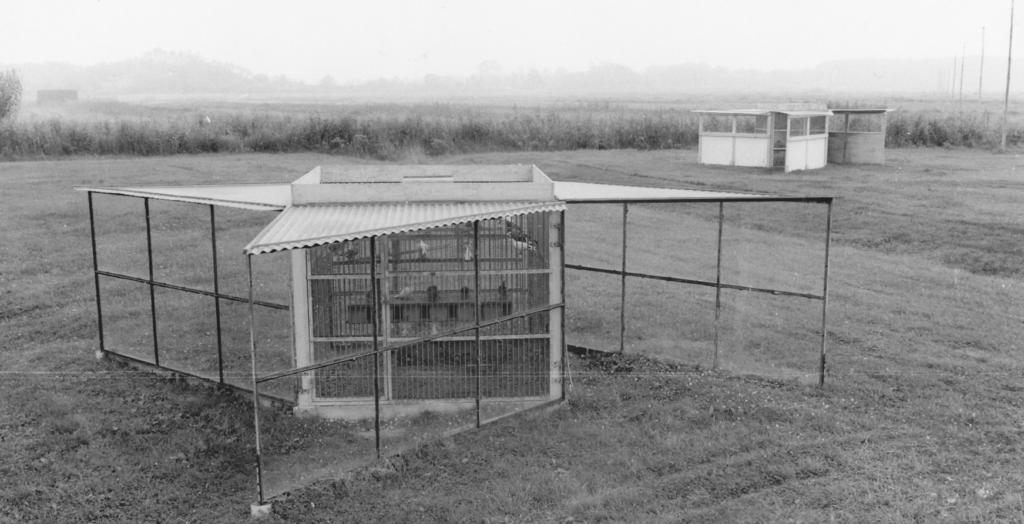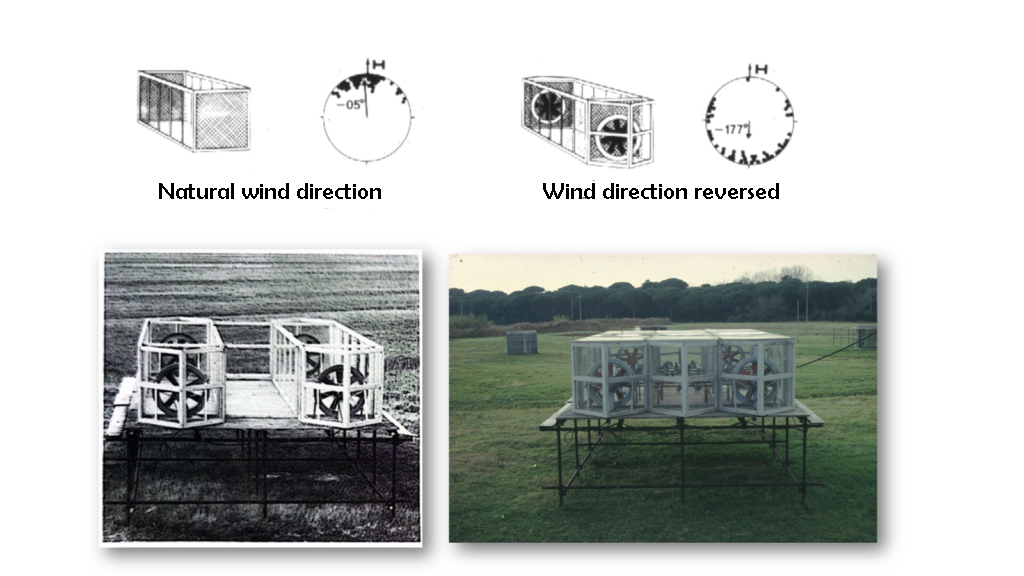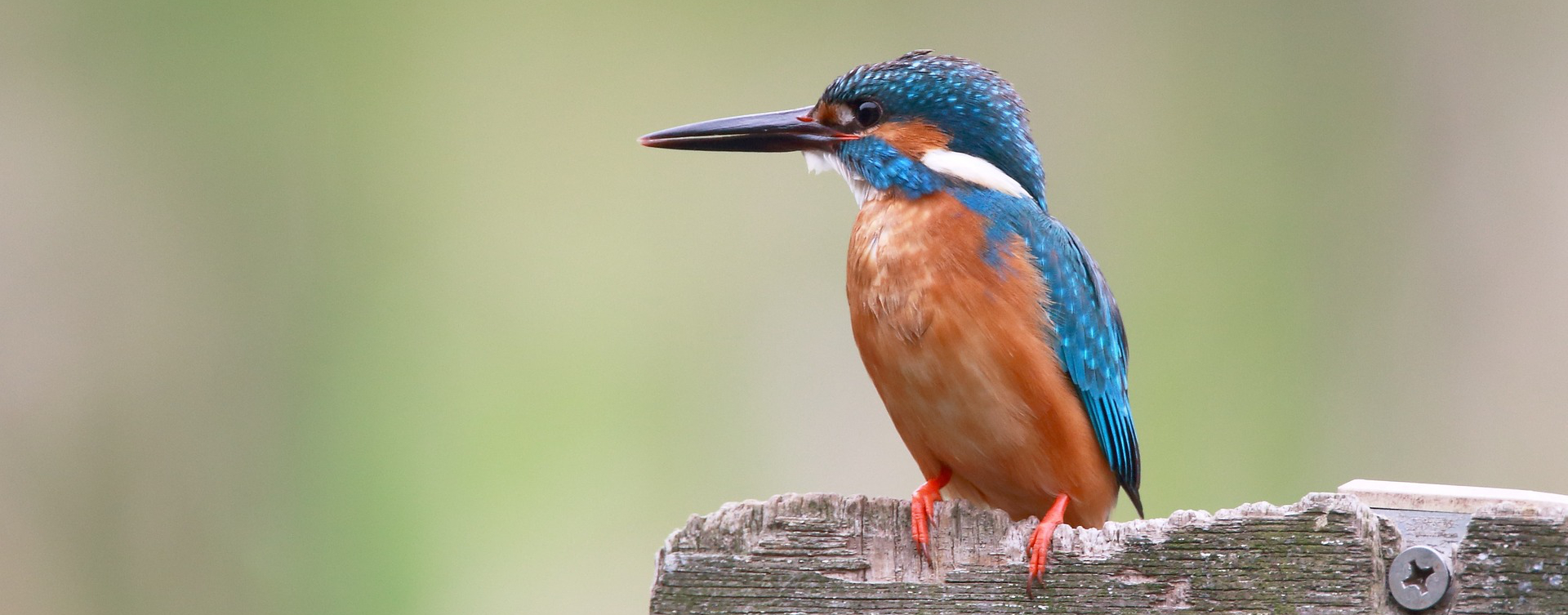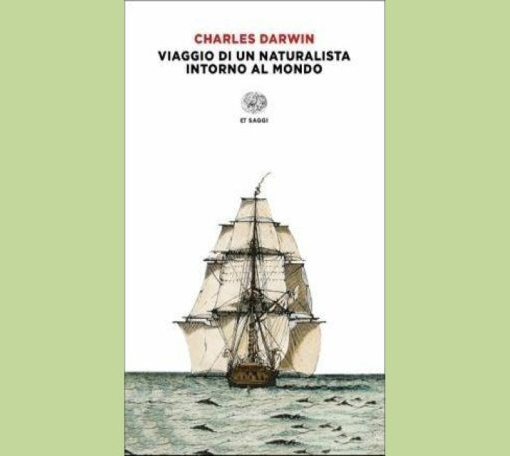
Last month, we explored whether birds have a keen sense of smell (https://www.earthgardeners.it/en/2025/01/30/do-birds-have-good-noses/), and contrary to popular belief, we concluded they do. The racing pigeon, a domestic breed refined over centuries for its strong attachment to its home, provides a fascinating example. When transported far from its dovecote and released, it can easily find its way back. Serving as airborne messengers since ancient times, pigeons were used by civilizations like the Sumerians and Egyptians and even played critical roles during the last Great War. In fact, one pigeon was awarded a medal for military valor due to its bravery in challenging conditions. Since thenhe mystery of how pigeons navigate their way home has remained unresolved.
In July 1971, a team of ethologists from the University of Pisa, led by Floriano Papi, conducted a series of pioneering experiments that laid the foundation for the hypothesis of olfactory navigation in pigeons. They discovered that temporarily blocking a pigeon’s ability to perceive odors, by sealing its nostrils with a cotton swab, significantly disrupted its ability to return home, even from short distances. This finding suggested that the sense of smell might play a crucial role in guiding the pigeons’ homing behavior.
These findings motivated us to seek empirical evidence for an idea that was becoming increasingly compelling. What odours might be involved, and how could they benefit the pigeons? Atmospheric odors, carried by the winds, seemed to vary in quality depending on their origin. If this were the case, these odours might characterize specific geographical regions, allowing pigeons to recognize locations using their natural compasses (solar and magnetic1). In essence, odours could serve as a source of information, forming an olfactory map of the area where the pigeons lived. The extent of this map remained uncertain, but it could explain their remarkable navigation abilities. If pigeons genuinely perceived these odors and their association with winds was significant, then the interaction between odours and wind warranted deeper investigation, and that became our focus.
If the wind-odour association enabled the map’s construction, what outcomes could be anticipated if this connection were altered or disrupted? Over more than two decades of research, numerous experiments have provided undeniable empirical evidence demonstrating the critical role olfactory stimuli play in the orientation and homing behaviour of pigeons. Here are a few notable examples.
When two groups of pigeons were raised—one in an aviary exposed to open winds and the other in an enclosure surrounded by glass walls—the former exhibited a strong sense of orientation toward home and returned quickly. In contrast, the latter displayed random orientation and failed to return when released in unfamiliar locations. This suggests that the second group lacked the ability to determine the correct direction to return home.

With the “deflector aviaries” experiment (Image 1), we made a significant impact: these were cubic aviaries equipped with deflectors of suitable lengths attached to their corners. These deflectors were designed to redirect the wind flow inside the aviaries in a manner consistent with their configuration, whether clockwise or counterclockwise.
The wind tunnel display of the models demonstrated that the average deflection experienced by the pigeons within the aviary was around 70°. An identical aviary without deflectors was used as a control. It was anticipated that the deflection would match both the direction and magnitude observed in the control pigeons, which was confirmed during multiple releases conducted at distances between 9 and 105 km, as shown in Figure 2.

The alteration of wind patterns resulted in a corresponding distortion of the pigeons’ olfactory map. Subsequent experiments gained traction in Germany and the United States, sparking imaginative critiques and hypotheses that sought to attribute the findings to alternative factors. Baffle cages were later employed to investigate whether pigeons raised in standard aviaries, having developed an unaltered olfactory map, could adapt it when relocated to the baffle cages. After three months in these cages, their map was found to have shifted in alignment with the specific deviation they experienced. Similarly, pigeons that had previously developed a rotated map were able to adjust it in the opposite direction when transferred to cages with a reversed orientation, effectively switching from one deviation to another.
In response to the criticisms, we carried out the experiments depicted in Image 3, during which the experimental pigeons experienced the winds as being reversed compared to the control group.

In this study, the pigeons were housed in three adjacent corridor aviaries aligned along a NW-SE axis. The central aviary contained the control group, which could freely perceive the natural mistral wind dominant in the area or wind coming from the opposite direction. In the left aviary, the pigeons were shielded from the natural wind by glass walls, but its direction was simulated using a fan, providing the same olfactory input but with artificial airflow. In the right aviary, a fan was used to replicate wind coming from a direction opposite to the natural one, also maintaining the same olfactory cues but reversed by 180°. When the pigeons were released in locations approximately aligned with the aviary and familiar through olfactory input, it was anticipated that those in the left aviary would behave like the control group, orienting themselves toward home, while those in the right aviary would choose an opposite direction. The results confirmed these expectations.
Overall, a highly credible demonstration was provided, showing that the orienting stimulus was driven by the winds and the olfactory information they carried. This stimulus served as the foundation for creating an olfactory map of the areas where the pigeons lived, as well as the surrounding regions, spanning several hundred kilometers. This conclusion aligns with empirical data collected later through additional testing.
Alla fine degli anni ’90, il materiale raccolto in 20 anni di sperimentazione costituiva ormai uno degli argomenti cardine della ricerca internazionale sulla navigazione dei colombi e degli uccelli in generale. Era ormai chiaro a tutti che gli odori avevano un ruolo sostanziale nella navigazione del colombo, costituendo la base del processo di localizzazione rispetto alla meta da raggiungere. Tra il cumulo di evidenze sperimentali che avevamo portato, quelle che avevano direttamente interessato la manipolazione dell’ambiente olfattivo durante il processo di homing o durante lo sviluppo della mappa (deflettori, inversione dei venti) costtuivano le più forti evidenze in favore della ipotesi olfattiva, a cui era difficile opporsi con ipotesi causali alternative a quelle da noi invocate.
By the end of the 1990s, the material collected in 20 years of experimentation had become one of the cornerstones of international research on pigeon navigation and that of birds in general. It became widely recognized that odours play a significant role in pigeon navigation, forming the basis of the localization process in relation to the intended destination. Among the extensive experimental evidence we had gathered, the experiments involving direct manipulation of the olfactory environment, such as the use of deflectors or wind inversion during the homing process or map development, provided the most compelling support for the olfactory hypothesis. These findings posed a considerable challenge to alternative causal theories that attempted to counter our conclusions.
La ipotesi olfattiva era divenuta una solida realtà e non più una ipotesi, incrementando ulteriormente un panorama di ricerca del tutto originale: quello della funzione olfattiva nell’orientamento degli uccelli.
The olfactory hypothesis had become a solid reality and no longer a hypothesis, opening up a groundbreaking research perspective: the role of olfactory function in bird navigation.
- https://www.earthgardeners.it/2023/10/27/le-bussole-degli-animali-le-stelle/
https://www.earthgardeners.it/2024/12/26/bussole-solari-stellari-magnetiche-e-la-luna/
https://www.earthgardeners.it/2023/12/10/le-bussole-degli-animali-il-campo-geomagnetico/
https://www.earthgardeners.it/2023/11/28/le-bussole-degli-animali-il-sole-e-la-luna/
↩︎
Crediti
Autore: N. Emilio Baldaccini. Già Professore Ordinario di Etologia e di Conservazione delle risorse Zoocenotiche dell’Università di Pisa. Autore di oltre 300 memorie scientifiche su riviste internazionali e nazionali. Svolge attività di divulgazione scientifica. E’ coautore di testi universitari di Etologia, Zoologia Generale e Sistematica, Anatomia Comparata.
Credits
Author: N. Emilio Baldaccini Former Professor of Ethology and Conservation of Zoocenotic Resources at the University of Pisa. He has published over 300 scientific papers in national and international journals. Actively engaged in scientific education, he is also a co-author of academic textbooks on Ethology, General and Systematic Zoology, and Comparative Anatomy.
Translated by Maria Antonietta Sessa



